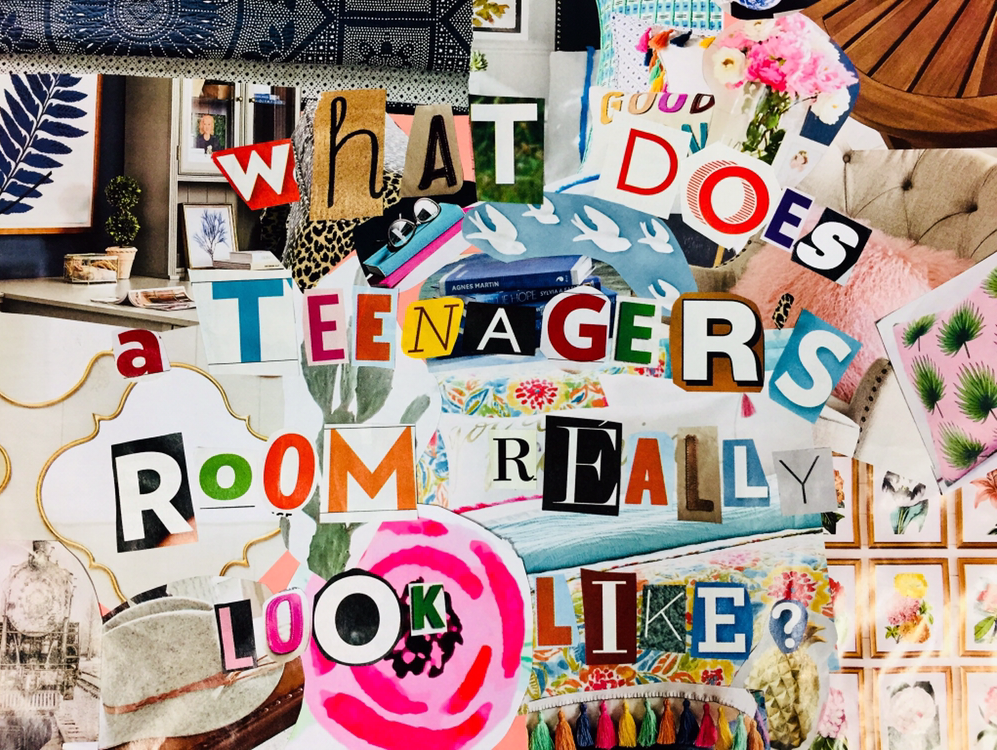Your donation will support the student journalists of North Cobb High School. Your contribution will allow us to purchase equipment and cover our annual website hosting costs.
Teenage Dreams: How bedrooms reflect teen minds
April 18, 2018
Four walls: walls standing tall and watching through births and first steps, late nights spent cramming homework, good morning phone calls, anxious breakdowns, after-shower singing sessions, the first heartbreak, and countless sleepovers spent sharing secrets and dreams.
One door; the door walked out of on the first day of school, seeing each outfit change, familiar face, and heated argument. One door, receiving countless gentle knocks on its poster-covered face, warning all who dare to enter to “Keep Out!”
One window; the window that watches the sun rise every morning and set every night, that allows a look into the outside world, the window that, if it catches the light just right, projects rainbows across the room.
An individual spends hours on end in their bedroom, a safe haven and a place to call their own. A bedroom exists as not only a place to rest, but as four walls yearning to express oneself through decor, memories, and messages.
As a child, the parent often takes on the task of decorating the bedroom, often choosing a blue color palette for boys and a pink color palette for girls. Stuffed animals decorate the room, and toys and building blocks are often scattered throughout the space. (picture of own childhood room here?) Children typically have little say in the decoration of their rooms. When a person becomes a preteen, however, they begin to develop their own opinions and style (zebra-printed comforter, anyone?).
“Two years ago I moved everything around and put paper on the walls so I could draw on my room. I draw tattoo designs on the walls and I have a bookshelf in my room with all of the books I have read. I have all of the Rick Riordan book—every series he’s ever written; those books grew up with me,” senior Autumn Larkins said.

Tara Anastasoff
At the preteen phase of one’s life, one often identifies a greater sense of independence within themselves. With this newfound independence comes a greater urge to change and make choices. Often covering walls with magazine posters of pop stars and puppies, this cringy but essential stage of life marks only the beginning of self-expression.
From the transition of dusty rose walls to modern and mature grey paint, an individual peels back the layers of their personality as they begin to develop their own unique style and interior decorating taste.
“Around middle school I was first allowed to decorate my room, I pretty much put up a bunch of action movie posters [on the walls] and painted the walls dark blue,” senior Thomas Schultz said.
Furniture stores often portray teenage rooms as either rough-and-tough and sporty or plushy pink Parisian dream, but as a teenager with teenager friends, not one of those schemes fit the reality of a bedroom.
The reality of the style in a teenager’s bedroom fails to fall into one category. Some rooms solely rely on the glow of strings of Christmas lights, other rooms seemingly reflect every ray of light from the mirrors and photographs on the walls. Some people paint their walls an ocean-toned teal; while others keep their walls eggshell white. Some teenagers have shelves full of books while others have shelves full of awards and memorabilia.
The only constant factor of the interior of a teenager’s bedroom is that the room is uniquely their own, a reflection of their personality and unlike any IKEA display.
“I think teenager’s rooms that furniture stores display are pretty cheesy, and I don’t think teenagers are that clean and organized. I think realistically they’re more laid back, and tapestries and fairy lights are really popular too,” sophomore Katie Word said.
With an unmade bed and notecards and mismatched socks scattered around the floor, these characteristics exhibit the common messy room that most teenagers inhabit. A pile of partly clean laundry sits half-folded on a chair. The faint smell of candles and old mugs of tea fill the room. Daylight peeks in through sheer white curtains, highlighting the dust bunnies making home on picture frames and childhood story books.
The mess or order of a teenager’s room provides a visual representation of the thoughts that run through their minds and a visual representation of what they hold important and what they hope to achieve. These six teenagers opened up their doors and their minds to give a better understanding of the real bedroom of a real teenager.
Meanwhile, popular culture portrays teen bedrooms of pure fantasy, completely removed from the reality of personal expression that goes into the choices teens make for their safe havens. The following serve as iconic examples of this fantasy, one that is mostly unsustainable for the average teen but those that have permeated the culture and inspired countless advertising campaigns for mass market consumption.
Hannah Montana:
Regina George:
Ferris Bueller:
Cher from Clueless:
Kat from 10 Things I Hate About You:
iCarly:







